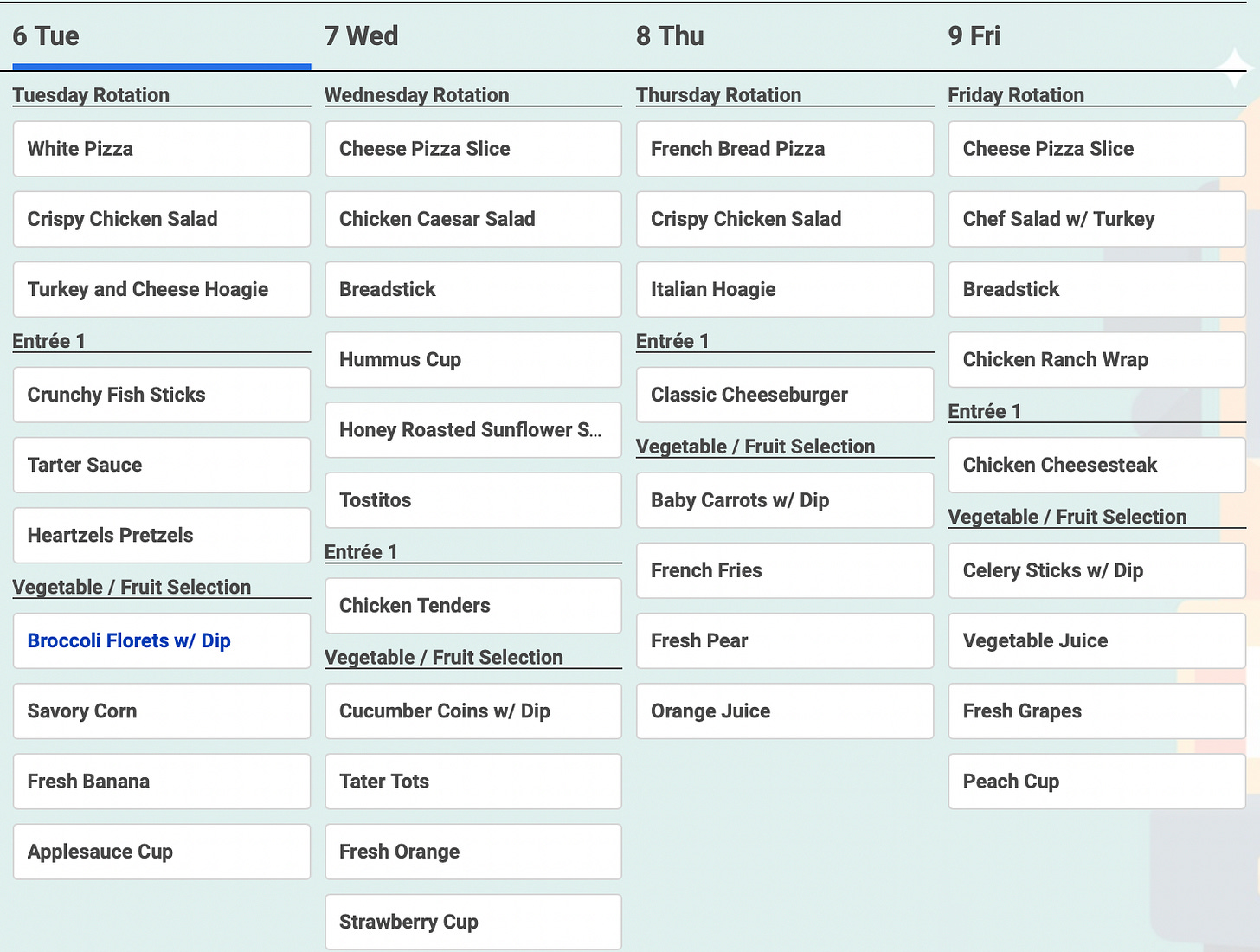Can school lunch end The Achievement Plateau?
Part 2/n: let's look at what kids eat in schools.

During the first day of school at many Philadelphia elementary schools, students had a breakfast menu complete with all the classics: French toast, breakfast sandwiches, cereal bars, fresh fruit and juice. (You can check the full menu here).
Lunch was similar. Here’s the lunch menu for this week, the second week of school.
Menus like the ones above are constructed like that (with entrees and sides) because schools that participate in the National School Breakfast/Lunch Program (free food) have to hit calorie requirements and offer vegetables and fruit and other “healthy” items. The full guidelines are here (they’re dense).
Most free lunch programs serve USDA Foods — food produced in the United States, categorized, and offered as a “meal product” (yummy!) by the USDA. In 2019, almost 30 million of the roughly 50 million public school students in the United States participated in the National School Lunch Program.
On the whole, these seem like decent menus, right? Yes there’s the guilty pleasures of French toast, pizza, hoagies, fish sticks, burgers, chips, tater tots, and chicken tenders that common sense tells us can’t be a daily staple in our diets.
But! There are fruits, vegetables, and salads offered every day! Not bad, right?!
Wrong. In my 6 years as a school principal, I rarely saw students choosing the healthy options. It’s hard to blame them.
The vegetables offered — savory corn, cucumbers, green beans, and carrots — are steamed and often flavorless. These aren’t the blistered brussel sprouts with bacon and creme fraiche you’re getting at your local gastropub, juiced up with fats to make them delicious — these are soulless, fibrous concoctions one chokes down when shredding for summer. No thanks.
The fruit that’s offered is generally unripened and flavorless. I love fruit, and when I was a principal there were often lots of tart apples, pale oranges, green bananas, and rocky pears left over from our lunch service. Even I couldn’t stand to take a bit of them.
Typically, most students are choosing those guilty pleasures: pizza, chicken tenders, fries or tots, and a juice. While they might be forced to put the other food on their plate — choosing a fruit and vegetable is sometimes required — much of it gets wasted. One study found students threw away over 50% of the food they were served. The World Wildlife Fund estimated this food waste amounts to over $1.7 billion every school year.
I’m not a nutritionist. I’m not a dietitian. I’m not a medical doctor. I not the authority on whether or not certain foods are “healthy,” a term that has many shades of meaning. But I do know this: I couldn’t eat foods like that — pizza, nuggets, tater tots — every day and still maintain a healthy weight.
And if you think students can, I would remind you that students get most of their daily calories from school. And we almost double the number of obese children as they progress from K through 12th grade in our public school system.
We can definitely do more to get students to eat healthy. Serving more palatable “healthy” foods is a good start — but without proper health and nutrition education, it’s probably not enough. Stay tuned for more on that next week.
Thanks for reading. Have a great — and flavorful — week.

